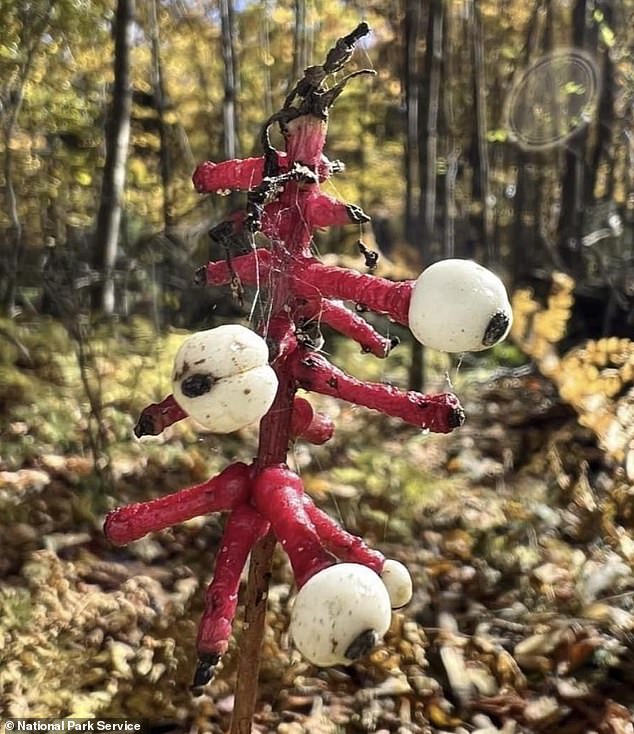Hikers are being urged to beware of a dangerous “nightmare” plant that looks like something out of a Halloween movie.
The white baneberry plant, known as ‘Doll’s Eye’ because of the berries’ eerie resemblance to eyeballs, spreads through forests and jungles during the fall.
It is native to eastern America, the Midwest and Canada, but will adapt to most growing conditions and can be found in most states in the country.
Experts warn that every part of the plant, from the root to the berries, is extremely toxic and, if ingested, can cause serious side effects or, in extreme cases, even death.
The white baneberry plant has pink stems that hold berries that resemble eyeballs.
Forager Alexis Nikole described the berries, which grow on pink, meat-like stems, as “complete and utter nightmare fuel” in a recent TikTok video.
She said: ‘The creepiest plant in North America. As if I need to tell you not to eat them, they seem to harbor a curse.
“It seems that if you eat one of those, your bloodline will be cursed forever and eternity,” he added.
The word “baneberry” comes from the Old English words “bana” or “bona”, which translates as “killer” or “murderer”, the Indiana Native Plant Society explained.
If humans eat white berries, which grow mainly in forests and wetlands, they can experience dizziness, delusions, hallucinations, cardiac arrest and circulatory failure, it continues.
Other symptoms include gastrointestinal inflammation, vomiting, stomach pain, burning sensation in the mouth or throat, headaches, and seizures.
Simply touching the plant is usually harmless, but contact can cause dermatitis in sensitive people, the society added.
The berries and roots are the most poisonous parts of the plant.
Eating just six of these bitter-tasting berries could lead to serious illness or death, the Indiana Native Plant Society warned. Children are more likely to be injured than adults.
Its toxicity is related to a chemical compound called ranunculin.
Ranunculin becomes an irritating oil in the plant, according to Colorado State University.
“The toxicity of a plant can vary depending on the season, the different parts of the plant and its growth phase,” he notes. Lady Bird Johnson Wildflower Center explained.
No baneberry-related deaths or serious illnesses have been reported in the U.S., but parks departments, government agencies and botanical experts issue regular warnings about the danger it poses.
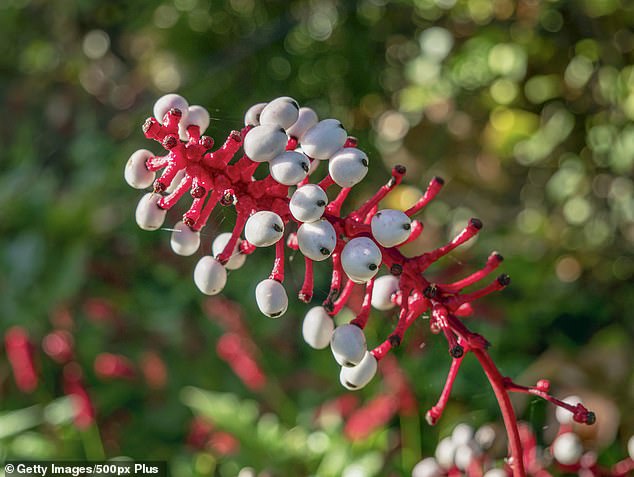
The ‘doll’s eye’ plant can cause serious side effects if ingested and even be fatal.

Whiteberries bloom from July to October in forest environments.
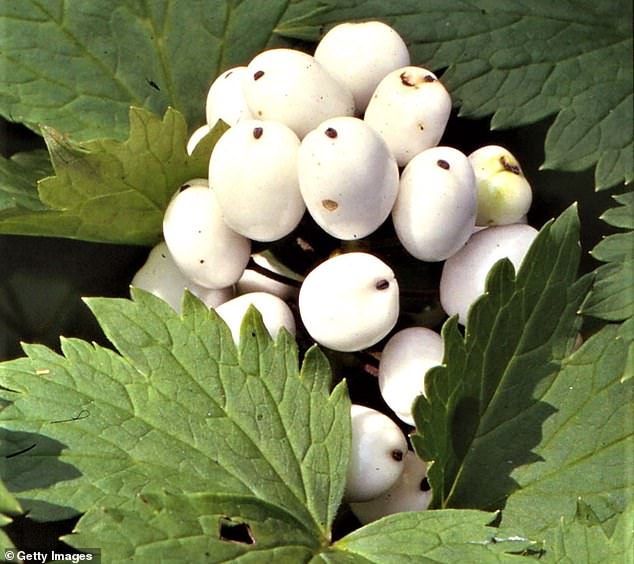
Eating just six berries can be fatal, prompting experts and government agencies to issue stern warnings about their dangers.
The National Park Service issued a warning about the plant on Facebook.
“My toxic trait is that I am toxic,” the post reads.
The agency encouraged people not to eat the fruit of the “creepy eyeball aesthetic” plant.
‘As if eyeballs weren’t enough, they all have reddish “optic nerves” connecting them. A nightmare,’ commented one user.
Another person chimed in: ‘This plant just screams “Don’t eat me!” I don’t understand why a human would think something so grotesque was acceptable.
Someone else added: ‘What the hell is this in the Halloween nightmare?’
According to Colorado State University, a Eurasian species of the plant has been linked to the deaths of several children.
“In Europe there are references to the deaths of children who ate the striking red or white berries,” the university stated.
The Eurasian baneberry is native to Western Asia and Eastern European countries. It is also known as “Christopher herb.”
Another related plant is the redberry, which grows everywhere in the U.S. except the Southeast, according to Wisconsin Horticulture. It can also be found in some parts of Mexico.
Baneberries generally bloom from July to October.
The botanical name of the white baneberry plant is actaea pachypoda. The lingonberry plant is known as actaea rubra and the Eurasian variant is called actaea spicata.
“It’s pretty easy to identify,” a wildlife fan from Yukon, Canada, said of redberries. “It has large clusters of bright red berries at the end of the stem.”
He added: “The leaves are also unique, in these groups of three with irregular edges.”
All three species belong to the buttercup family. The red and Eurasian variants share similar appearances, while the white doll-eyed berries have a more disturbing appearance.
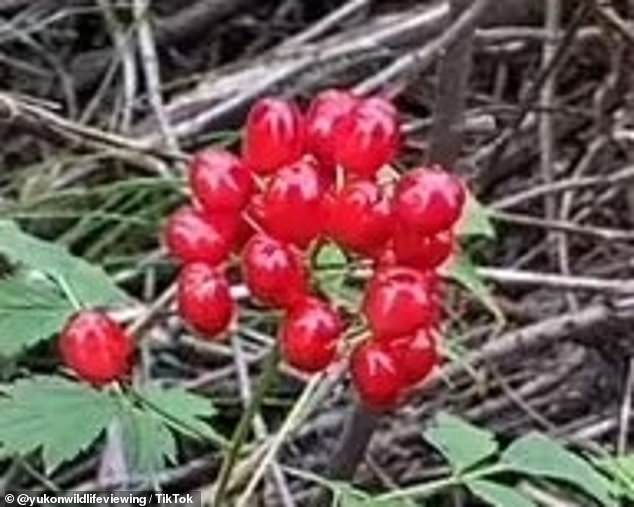
The red berry grows everywhere in the US except the southeastern part and is just as deadly as the white berry.
Another explorer documented his sighting of white baneberry in upstate New York.
They said in a TikTok: ‘Then my friend pointed out the white baneberry. This one here is the biggest one I’ve ever seen in my life.
“That’s crazy, I’ve never seen that before, I’ve never seen anything even half of that, but yeah, highly toxic, definitely not edible.”
The white baneberry plant can grow up to three feet tall.
Despite the toxicity of baneberries, the plant used to have medicinal purposes in Native American culture.
Baneberry juice was considered a “valuable remedy against snake bites,” according to botanical.comand it was used to make black people die.
Parts of the plant, made into tea, were used to treat menstrual irregularity and postpartum pain, according to Information on medicinal herbs.
It was also used to treat common colds and coughs and as a remedy for constipation.
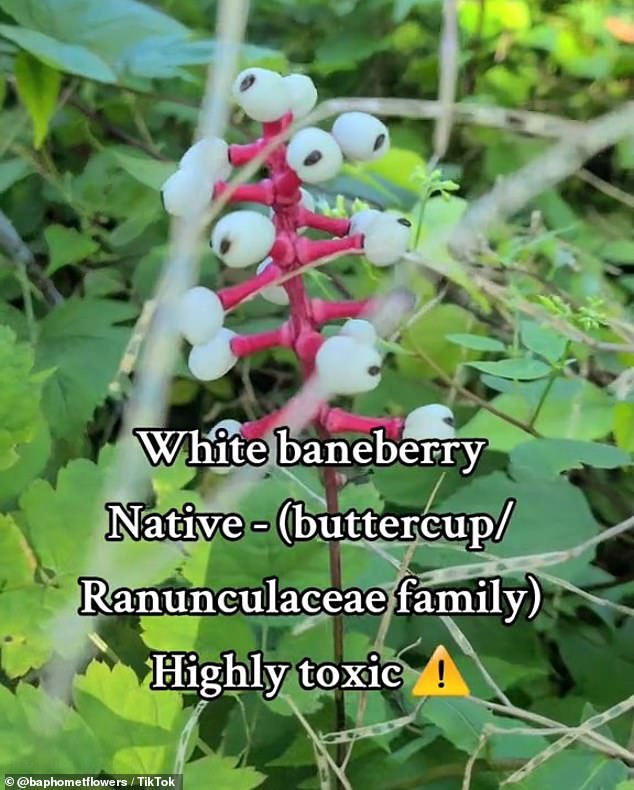
A hiker who encountered the deadly white berries in New York documented his experiences
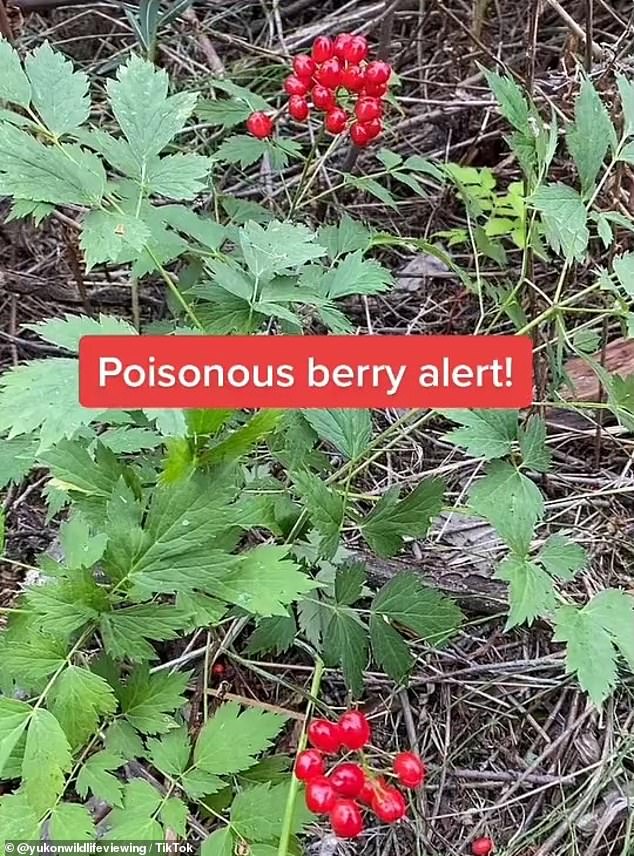
A wildlife explorer spotted red mulberries in Canada and explained their harmful effects.
Awkward Botany reported that baneberries are “occasionally eaten by livestock and wildlife, including deer, elk, and small mammals,” but the plant produces little to no nutritional value.
Cows and horses can be poisoned by the berries, according to Colorado State University.
Dogs and cats should not eat them either. The berries can irritate their mouth and, if consumed in large quantities, can cause kidney damage, according to the Pet Poison Helpline. But the birds don’t seem to be affected.


